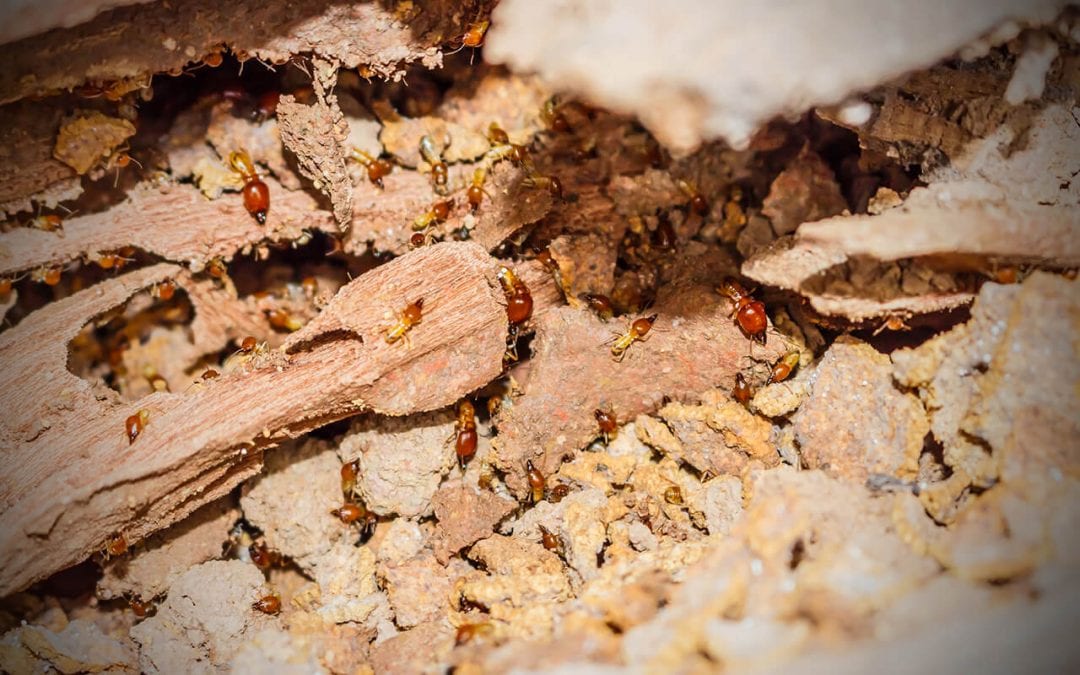Common Wood-Destroying Insects
Wood-destroying insects can cause enough damage to compromise your home’s structural integrity and make it unsafe to live in. Infestations are often due to moist wood from leaks and construction defects. Older homes are generally more susceptible to such infestations than newer ones, however, any home that meets the conditions favorable for insect populations will be at risk of infestation. Here’s a detailed look at the most common wood-destroying insects.
1. Termites
Termites are the most common wood-destroying insects and also the most destructive. Although termites are common in warmer environments, they can be found in some localized areas as well. Termites are social and colonizing. Each colony is comprised of reproductive termites, soldiers, and workers, with workers causing the damage seen in wood. Among the various termite species, dry wood and subterranean termites are the most common.
Subterranean termites: These insects are attracted by excessive wood moisture and wood close to the soil. The workers build mud tunnels or tubes used for traveling between the ground and wood elements. These tunnels are often the only way to detect the presence of subterranean termites since they are good at concealing their activity. For this reason, it’s best to hire a professional to conduct a WDO inspection. Other signs of termite infestation include swarming winged termites and damaged dry wood.
Drywood termites: These are the most common wood-destroying insects in warm southern coastal climates. Aside from feeding and nesting inside the wood, they will feast on any dry wood in your home. Infestation signs include small piles of fecal pellets and partially digested wood. Although spot treatment can be used for limited infestations, extreme cases may require extensive fumigation.
2. Carpenter Ants
This type of black-colored ant is relatively bigger than the reddish-black ant. Carpenter ants are the most common wood-destroying insects in many areas. Although they usually nest in old tree stumps and timbers, carpenter ants can infest the home in search of food and nest within.
Unlike termites, carpenter ants do not damage wood for nourishment, so they tend to cause localized damages. They are attracted to high-moisture areas and wet environments. In some cases, carpenter ant infestations can be eliminated by removing the wood that’s attracting them and applying a surface pesticide or spot treatment. However, treatment can sometimes involve the entire house. Hiring a professional to conduct a WDO inspection is often the best course of action.
3. Carpenter Bee
This bee is quite similar to the bumblebee in appearance. As common wood-destroying insects, carpenter bees usually create tunnels for depositing their eggs in exterior pieces of wood trim. Although the carpenter bee is considered a nuisance pest, it can cause structural damage, especially if re-infestation is allowed. This is because they tend to re-infest the same areas. Signs of a carpenter bee infestation include noticeable piles of sawdust. Spot treatment and plugging the holes can help eliminate most infestations but professional services might be recommended for some cases.
4. Beetles
Old house beetles, powder post beetles, and wharf borers are the most common types of wood-destroying beetles. Each type has different physical characteristics from their sizes and shapes to their color. Adult beetles lay their eggs in cracks or holes in the wood. The eggs develop and start boring through the wood as they reach their larval stage. After some time, the larvae will exit through these holes in the structure as adults. The presence of fine sawdust is one of the main signs of a beetle infestation.
Having a professional WDO inspection performed on your home is the best way to get any pest infestations under the control. Exceptional Engineering Home Inspections provides home inspection services including WDO inspections to Maricopa County. Contact us to book your appointment.

